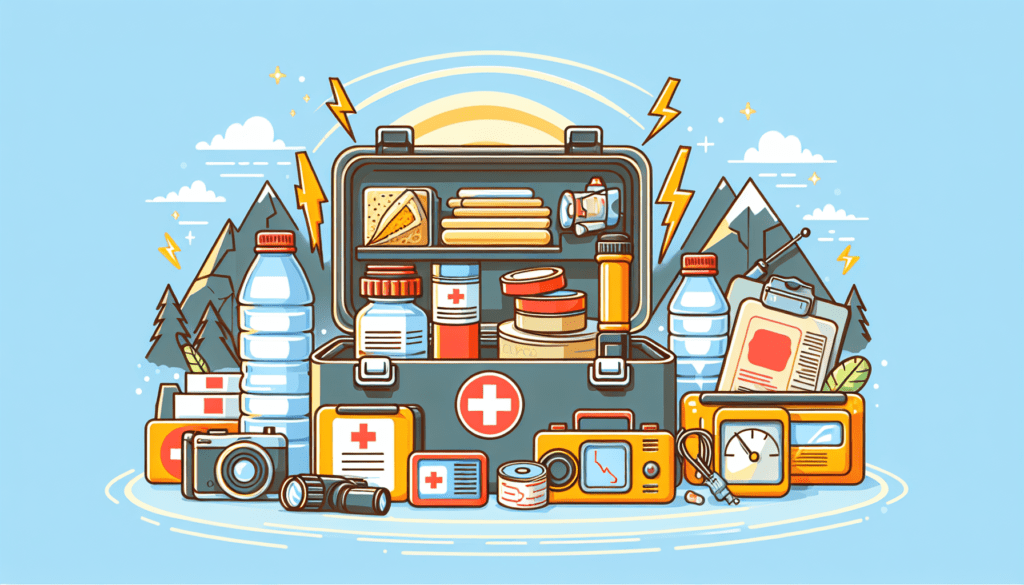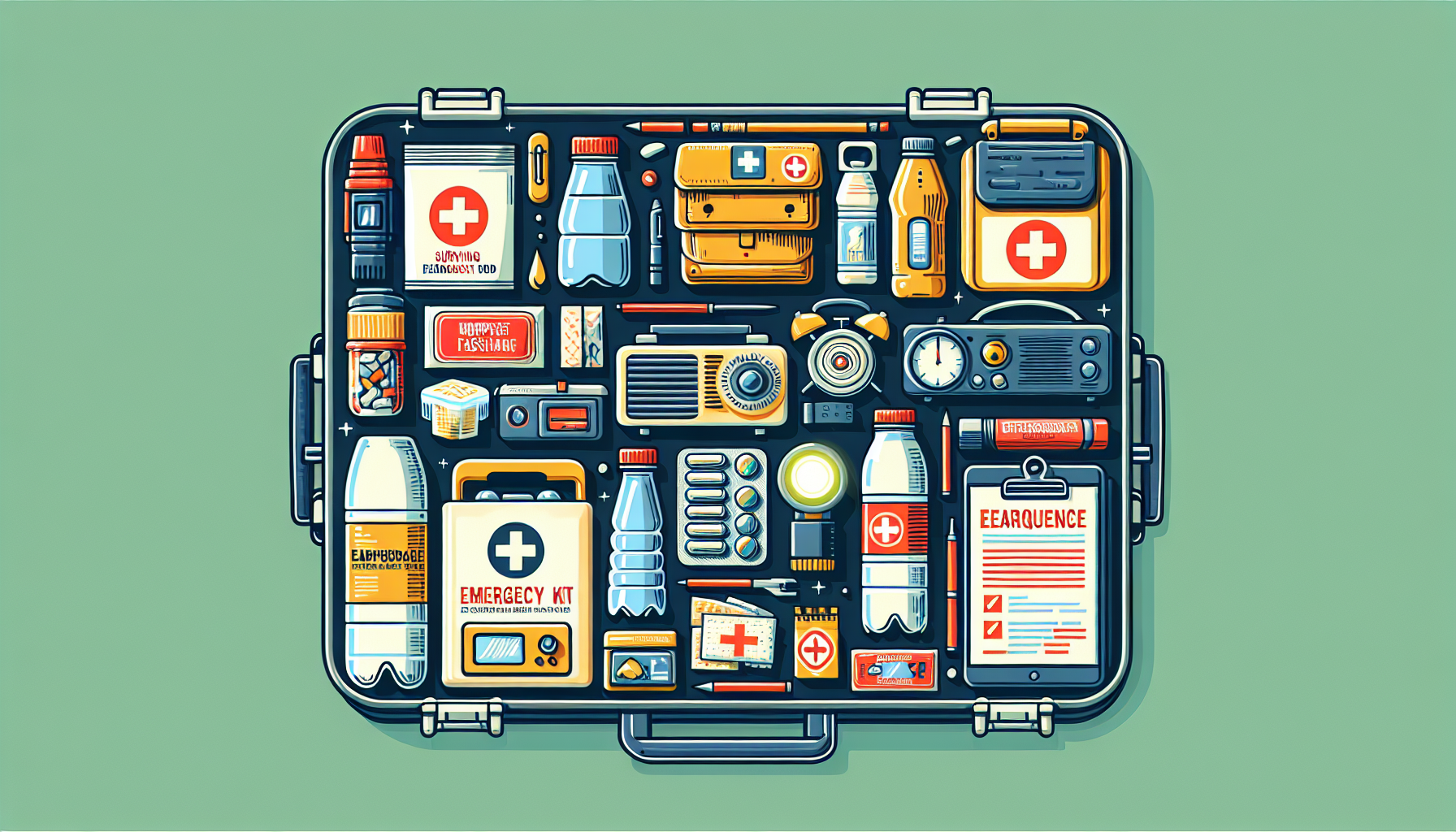Imagine that you find yourself in the midst of a powerful earthquake. In those terrifying moments, you are confronted with a life-or-death situation and the need to act swiftly and decisively. That’s why it’s crucial to be prepared and know what to do before, during, and after an earthquake strikes. In this article, we will guide you through the essential steps to help you survive and stay safe during this natural disaster. From creating an emergency plan to understanding the immediate actions to take, we’ve got you covered. So let’s arm ourselves with knowledge and prepare for the unexpected to ensure our safety and the safety of our loved ones.

Preparing for an Earthquake
Create an Emergency Plan
Before an earthquake strikes, it is crucial to have a well-thought-out emergency plan in place. Start by gathering your family members or housemates and discussing the necessary steps to take when an earthquake occurs. Assign each person specific responsibilities, such as grabbing essential items or helping others evacuate. Make sure everyone knows where to meet after the earthquake in case you get separated. Having a clear plan in place will minimize confusion and ensure everyone’s safety.
Identify Safe Places in Your Home
Take the time to identify the safest areas in your home to seek shelter during an earthquake. Look for spots away from windows, heavy furniture, or objects that may fall. Ideally, a sturdy table or desk should be designated as the go-to spot to take cover. If you live in a multi-story building, stairs or an interior hallway on the lowest floor would be a suitable option. Remember, the goal is to protect yourself from falling debris and possible structural damage.
Secure Heavy Items
During an earthquake, heavy objects can become dangerous projectiles if they are not adequately secured. Take the necessary precautions by fastening heavy furniture, appliances, and electronics to the wall using straps, brackets, or other stability devices. Items such as bookshelves, cabinets, or water heaters should be anchored securely. By securing these items, you lessen the risk of them tipping over and causing harm during an earthquake.
Secure Your Home’s Structure
One crucial aspect of earthquake preparation is ensuring that your home’s structure is as secure as possible. Seek professional advice on reinforcing the foundation, walls, and roof of your house to withstand seismic activity. Consult with a licensed contractor or engineer experienced in retrofitting buildings for earthquake safety. They can assess potential weaknesses and provide recommendations on how to strengthen your home’s structure. Investing in these measures can significantly reduce the risk of collapse and protect your loved ones.
Prepare Emergency Supplies
In anticipation of an earthquake, it is vital to have an emergency supply kit readily available. This kit should include enough provisions to sustain you and your family for at least three days. Essential items to include are non-perishable food, water, medications, a first aid kit, flashlights, batteries, a portable radio, and extra clothing. Additionally, you should pack any necessary personal documents, cash, and adequate supplies for your pets. Keep your emergency supplies in a designated area that is easily accessible to all household members.
During an Earthquake
Drop, Cover, and Hold On
When an earthquake occurs, remember the mantra “Drop, Cover, and Hold On.” Immediately drop down to your hands and knees to prevent being knocked over by the shaking. Take cover under a sturdy piece of furniture, such as a table or desk, and hold on until the shaking stops. Covering your head and neck with your arms can help protect you from falling debris and potential injuries. Be prepared for aftershocks, which are often less severe but can still cause damage.
Stay Indoors
While it may be tempting to rush outside during an earthquake, staying indoors is generally the safest course of action. Most injuries occur when people try to exit or enter buildings during the shaking. Falling objects or collapsing structures pose significant risks. Once you have taken cover under a sturdy object, stay inside until the shaking stops and it is safe to move.
Stay Away from Windows
During an earthquake, windows can shatter, sending shards of glass flying. To avoid injury from broken glass, stay away from windows and glass doors. Move towards the center of the room, if possible, or seek shelter under a sturdy piece of furniture. Be cautious of windows in adjacent rooms as well, as they can still pose a risk.
If Outdoors, Find an Open Area
If you find yourself outside when an earthquake occurs, quickly move to an open area away from buildings, streetlights, utility wires, and trees. These objects may collapse or fall during the shaking, posing a significant danger. Once in an open area, drop to the ground, cover your head and neck, and stay there until the shaking subsides. Be aware of your surroundings and stay clear of any potential hazards.
If in a Vehicle, Stop Safely
If you are in a vehicle when an earthquake strikes, safely pull over to the side of the road, away from overpasses, bridges, and power lines. Stay inside your vehicle and avoid parking near buildings or under trees. Once the shaking stops, proceed with caution and avoid damaged roadways or structures that may pose a risk.

After an Earthquake
Check for Injuries
After an earthquake, the first priority is to check yourself and others for injuries. Attend to any immediate medical needs and seek medical assistance if necessary. Be cautious while moving around, as there may be broken glass or debris on the floor. If someone is injured and unable to be moved, provide comfort and reassurance until help arrives.
Assess Your Surroundings
Once you have ensured everyone’s safety, take a moment to assess your surroundings. Look for potential hazards, such as gas leaks, damaged electrical lines, or structural damage. If you suspect a gas leak, immediately turn off the main gas valve and leave the area. Take note of any downed power lines and avoid them at all costs. If you identify severe structural damage to your home, it may not be safe to reenter.
Turn Off Utilities
To prevent further damage and potential hazards, it is crucial to turn off your utilities after an earthquake. Locate your main electrical panel and switch off the power. Similarly, locate your main gas valve and shut it off to prevent leaks. If you are unsure how to safely turn off utilities, contact the respective service providers for guidance.
Listen to Updates and Alerts
Following an earthquake, it is essential to stay informed and listen to updates and alerts from local authorities. Tune in to your portable radio or mobile devices for emergency broadcasts and instructions. Pay attention to evacuation notices, road closures, or other safety information provided by authorities. Stay calm and follow the instructions given to ensure your safety and the well-being of your community.
Inspect Your Home for Damage
After the immediate aftermath has passed, thoroughly inspect your home for any structural damage or hazards. Look for cracks in walls, ceilings, or foundation, sagging or leaning walls, or any signs of significant damage. Document any structural concerns with photographs or videos, as it may be helpful for insurance claims. If you have any doubts about the safety of your home, have it professionally inspected before reoccupying it.
By following these guidelines and being prepared, you can increase your chances of staying safe during an earthquake. Remember, earthquakes can strike at any time, so it is vital to be proactive in your preparation. Take the necessary steps to create an emergency plan, secure your home, and stock essential supplies. During the earthquake, prioritize your safety by dropping, covering, and staying inside. After the shaking stops, check for injuries, assess your surroundings, and listen to updates from authorities. By taking these precautions and being vigilant, you can navigate through an earthquake and protect yourself and your loved ones.

